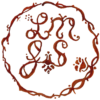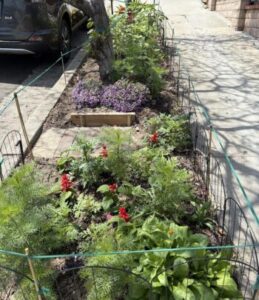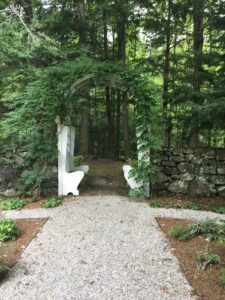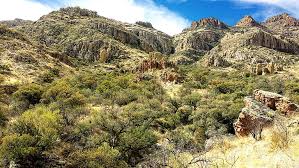
Tips on Fire Safety in the Landscape
The Plants and Materials you use in your landscape can impact the fire safety zone around your home. It is important to consider fire risk when planning or maintaining a garden.
Much of California and the western part of the U.S. is considered at risk for the fire storms we have seen on the news and around our communities over the last 10-15 years. The most at risk are homes in the hillside areas and where native foliage dries out in the summer. Unfortunately, we have seen these fires jump to more suburban or paved neighborhoods during wildfire season making homes that were considered relatively safe from fire part of the at risk assessment.
The home I grew up in was in one of the high risk hillside locations with lots of dry grass, poison oak and trees overhanging the house. Every year we would cut the dry grass back to the ground 80-100 feet away from the house and rake it all up and cart it away. We always made sure we had a hose at every hose hook up and raked the leaves off the roof. The trees were close to the house and we loved them so pruning them up away from the roof was the best we could do.
When I moved back home in 2017 to help my elderly Mom, I started doing serious work on our green belt. A green belt is a zone of landscaping meant to be a buffer if a fire gets close to the home. Typically a green belt is 30′-100′ wide depending on the area you are in.
For our property there were a few times when we had fires either adjacent or on a close ridgeline to the home. Pretty scary. I always felt on alert for the smell of smoke or the sound of cracking that a fire makes.
Plants that are a Risk to Fire Safety
The information I want to pass along to all homeowners is to be aware of the characteristics of the plants that are in your landscaping or in the native environment around your home. The native plant garden has been a popular concept for a long time and drought tolerant plants from around the world have been introduced into the local nurseries. One of the adaptations to drought in some of the native plants and introduced hybrids is the presence of oils in the stems, leaves and branches of plants to keep them viable in extreme heat and long drought cycles. As the shrubs dry out in the summer drought the plants become perfect fodder for fire.
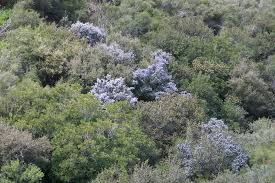

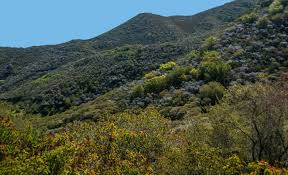
Chaparral Plants native to California and the West are some of the plants hybridized for use in landscaping and native plant gardens. Ceanothus (with the blue flowers), Manzanita (with the pink flowers) and other hillside natives like Coyote Brush, Native Sages and Broom are plants from the Chaparral Ecosystem. Typically in the summer these shrubs get very dry and the plants go dormant. The oils in their branches, leaves and stems keep them from drying out completely. Madrone, Poison Oak and Eucalyptus are also heavily endowed with oils and are very flammable.
In landscaping we use drip watering and irrigation to keep chaparral plants looking good through the summer and from going summer dormant. The oils are still present however, and homeowners should be aware that they can be flammable in a fire situation.
Other aromatic shrubs have these oils too- Rosemary, Lavender, Some of the Ornamental Sages, and shrubs in the mint family.
When planning a landscape on a dry hillside I would keep the native chaparral shrubs well away from the home and make sure they have irrigation to keep them from going dormant in the summer. Low ground covers, lawn, open ground or paving would be best within 30′ of the home and then a border of non flammable grasses, perennials or low shrubs up to 80-100′ from the home. This would be considered your green belt. Fire agencies also recommend not using shredded bark mulch against the base of wood framed homes in fire risk neighborhoods.
Stay in The Loop to Promote Fire Safety in the Landscape and Neighborhood
Be wary of outdoor cooking and fire pit areas, locating them out from below trees, roof overhangs and decking above a cooking area. Have ready access to water outlets in case of a fire.
Of the introduced hybrids from other parts of the world I would be careful with any Eucalyptus or Melaleuca hybrids. These spring to mind but I haven’t seen any other recorded evidence to add others to the list.
Many homes built in the last 20-40 years in the hills are much more fire resistant. Stucco with tile roofs etc….Unlike our Midcentury Modern home built in 1957 when it was all the rage to use wood decks and exteriors. It still stands- luckily. It did serve to make me very aware of fire safety so that’s a good thing to pass along!
The Nextdoor site and online neighborhood sites can help to spread information about areas that might need a clean up. We had the Fire Marshal come to a neighborhood meeting to discuss how we could help protect our home and landscape from fire and safely manage the dry hillsides. There is a good article from the University of California about SAFER (Sustainable and Fire Resistant Landscapes) – click button to see a very detailed pan of action.
Keep in mind the need for escape routes from the home and through the neighborhood. This is a great topic to discuss with your neighbors in case of the need to drive or pass through their property to gain safety. Be mindful of fire safety when hosting parties and events. Avoid candles, using battery operated candles over traditional types, provide smoking areas as needed and fire pits and bbq’s should always be attended.
One of the most common source of fire is construction materials and waste from construction projects i.e. oil and petroleum based solvents, paints and varnishes. I have a vivid memory of seeing paint cans explode and shoot out of a home on fire. I was only a child and the home was on a hill about 1/4 of a mile away.
We even bought a home in my adulthood that had caught on fire due to construction debris catching fire. The house had been rebuilt when we bought it. Both these experiences and others made me realize how common these incidents can be.
These days fires seem to be bigger and faster moving than ever so get out fast if there is a fire in your neighborhood.
Want to re design your garden to make it more resilient to the hazards of fire? Or update the look and feel of the area. See my course on Landscape design for information on making a change.
